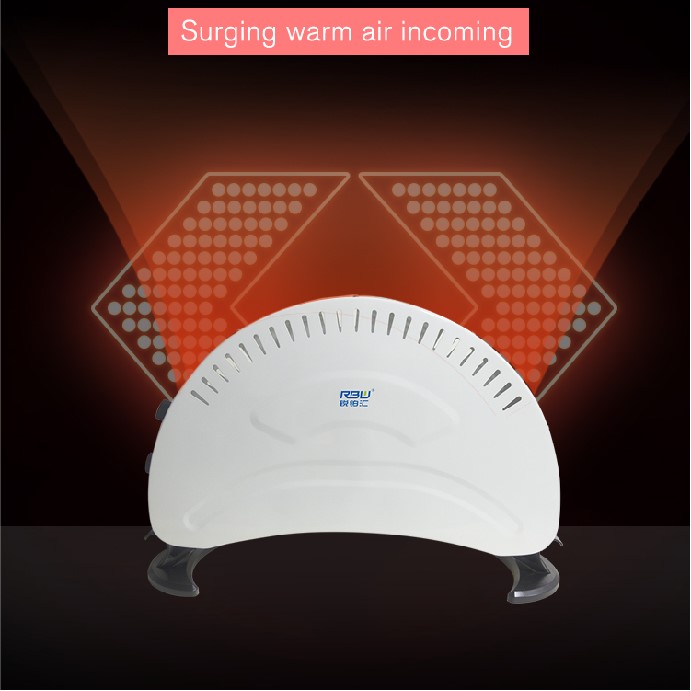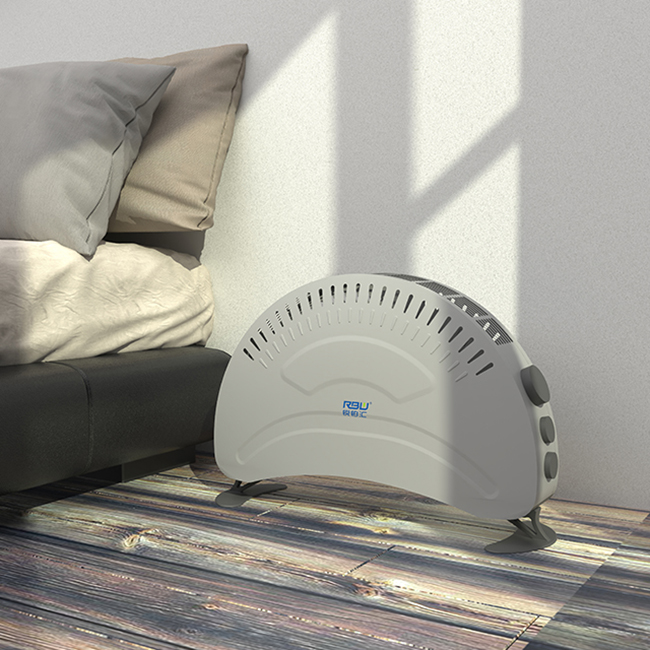A convection electric heater is a household heating device that achieves warmth using the principle of air convection. It does not require fan assistance and relies entirely on the natural circulation of air to raise the temperature. It is a common choice for heating small spaces in winter, especially suitable for scenarios like bedrooms, studies, and rental apartments.

Working Principle: The Cycle of "Cold Air In, Hot Air Out"
Heat Absorption Stage: After being powered on, the internal heating elements quickly heat up, causing the surrounding air to expand when heated.
Convection Stage: The hot air, with reduced density, flows upward and is discharged from the air outlet at the top of the heater, filling the indoor space.
Air Supplement Stage: Cold air from the bottom (including low-temperature indoor air) is supplemented into the heating area through the air inlet, forming a continuous air circulation pattern of "bottom-in and top-out".
Temperature Control Stage: When the indoor temperature reaches the set value, the thermostat automatically cuts off the power supply; when the temperature drops, the power is turned on again for heating, realizing constant-temperature operation.
Features:
Quiet Operation: The noise during operation is usually below 30 decibels, which does not affect sleep or work, making it suitable for people sensitive to noise.
Safety and Anti-Scalding: The outer shell is mostly made of flame-retardant ABS material, and the surface temperature is controlled between 50-60℃, so it is not easy to get scalded when touched. In addition, some products are equipped with an "anti-tip power-off" function.
Flexible Installation: It is divided into two types: wall-mounted and floor-standing. Wall-mounted models can save floor space, while floor-standing models are equipped with rollers for easy movement between different rooms.
Uniform Heating: It covers the entire space through air convection, avoiding local overheating and providing a more comfortable feeling. It is especially suitable for rooms where people stay for a long time.


Usage Precautions: Safety and Energy Efficiency
Proper Placement: Floor-standing models need to be 10-15cm away from the wall (to ensure air circulation) and should not block the air inlets/outlets; they should not be placed near flammable items such as curtains, sofas, and clothes (with a distance of ≥1 meter).
Avoid "Coverage" Risks: Do not place debris (such as clothes and books) on the top of the heater to prevent blockage of the air outlet and subsequent overheating.
Control Usage Duration: Do not use it continuously for more than 8 hours; you can turn it off for 1-2 hours midway for ventilation, which is both energy-saving and helps prevent dry indoor air.
Regular Cleaning: Wipe the air inlet filter (if available) with a dry cloth every month to remove dust and prevent blockage from affecting heat dissipation efficiency.
A convection electric heater is not an "all-purpose heating device", but it has obvious advantages in scenarios requiring small-space heating, low noise, and high safety. If you are a renter, someone in need of bedroom heating, or sensitive to fan noise, it will be a cost-effective choice.